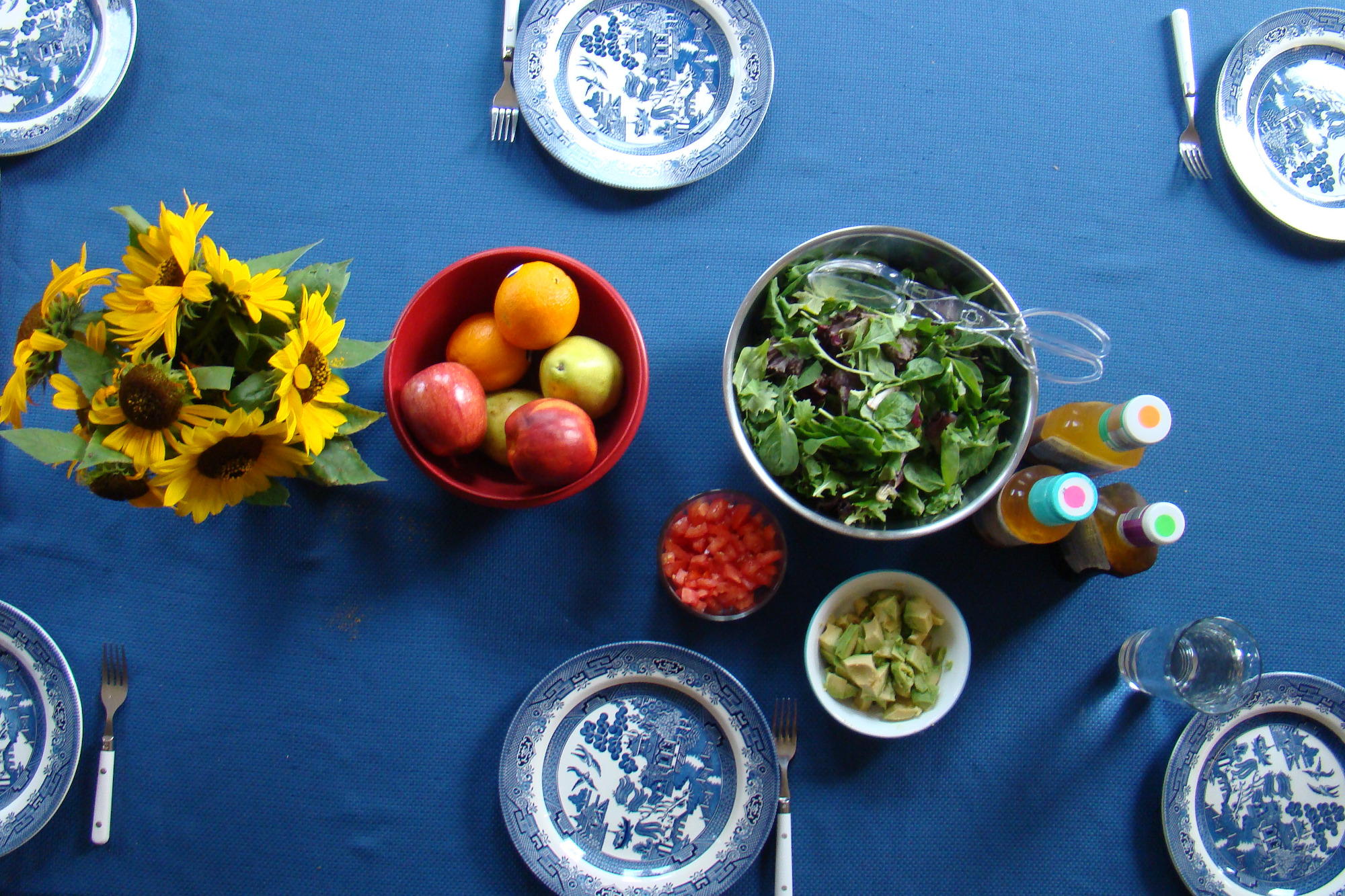Moving into dorms, apartments, or intentional living communities comes with the challenge and freedom of cooking. Some students come to college as experienced cooks, others start from scratch, and everyone learns something along the way.
Student cooks take many forms. In Kenwood House, kitchen strategies vary widely among the 10 residents.Khampa Stempel, a junior, prepares the week’s food on the weekend, and neatly stacks each meal in a tupperware container in the fridge. Harrison Gingerich, a junior, has cooked for years, and studies “The Food Lab,” a cookbook that reads like a food science textbook. Nick Walter, a senior, goes for a sandwich or burrito, or hunts for communal leftovers when he gets hungry.
Levi Glick, a junior living at Kenwood, munched on raisins from a box as he shared his approach to cooking. “I eat what I like to eat,” he said, “rice, beans, sweet potatoes.” For breakfast, Glick cooks oatmeal and piles it high with raisins, chia, and flax seeds, cacao nibs, and frozen fruit.
He says making soup is fun, too. Not everything cooks at the same rate, Glick said, so he adds in ingredients one by one, ordered by cook time: potatoes and onions near the beginning, parsley and quinoa to finish.
Glick cooked some in high school, but has learned almost all he knows from college cooking, he said. He’s learned how to soak and cook dry beans, how to plan ahead with meal prep, and how to save time by cooking in bulk and keeping leftovers to reheat.
He credits community living for a lot of his growth in the kitchen. “There is so much opportunity to learn from people you’re living with,” he said. Once, Glick was carefully cutting an onion when Gingerich offered to teach him some knife skills. Now Glick saves time when chopping onions.
Ruth Mischler, assistant professor in the sustainability and environmental education department, learned to cook during her college years too.
“I got tips, cookbook suggestions, and help along the way,” she said.
To make easy, healthy meals, Mischler recommends a rice cooker.
Starting at $20, a rice cooker can cook more than rice. All kinds of grains; lentils, millet, barley, sorghum, will cook nicely with a 2:1 ratio of water to grain. You can mix different grains together and add any veggies you have in the fridge, she said.
For meals that are healthy for people and the planet, Mischler spoke passionately about grass-fed meat. “Spending extra money on high quality meat is one of the best things you can do from the Earth’s perspective,” she said.
It will cost more, Mischler said, but if you get a group of friends together you can get a better deal by buying in bulk. Buying half a cow, or a whole cow, makes it easier for a farmer to sell, and could provide you with enough meat to last the year.
At Howell House, senior Jenae Stutzman stood in her kitchen, eating Nutella straight out of the jar. She loves Nutella, and said she eats it on everything: bagels, bananas, strawberries, even grapefruit.
When not eating Nutella, Stutzman saves time by keeping meals simple, she said. “I just am as lazy as possible,” she said.
One of her easy go-tos is personal pesto pizzas. She spreads pesto on a piece of naan, tops it with chopped veggies, and bakes it.
Senior Megan Graber, another Howell resident, saves time by planning and preparing one meal to last the whole week. “It can be really boring, but it saves time, energy, and money,” she said.
Graber recommends keeping your favorite dishes special. “Don’t make your favorite meal every week,” she said, “because it will get old, fast. It may taste really good when your mom makes it, but don’t make it every week.”
The residents of Kulp West, Abby King, Dillon Hershey, Olivia Smucker, Ellie Keener and Greta Neufeld, often make meals together.
Like Stutzman, they find that pizza is often a quick and easy meals for evenings when they’re on the go.
Junior Mezrae Watt says she’s the one who cooks for her mom at home. In her high school years, Watt’s parents often worked late, so there was no one else to make food. “I had to learn,” she said.
For Watt, cooking is comfort. In her kitchen in the apartments, Watt stood over a steaming pot of penne pasta, stirring it slowly. Creamy alfredo sauce simmered in a saucepan and bite-sized morsels of chicken, flecked with black pepper, sizzled in another.
In the years since, Watt has broadened her cooking horizons. “I like to change it up,” she said, prodding the chicken as it cooked. She often starts on Pinterest to find new ideas, then looks through recipes online to find the right one before getting started.
Watt recommends pasta dishes for cooks on a budget.



